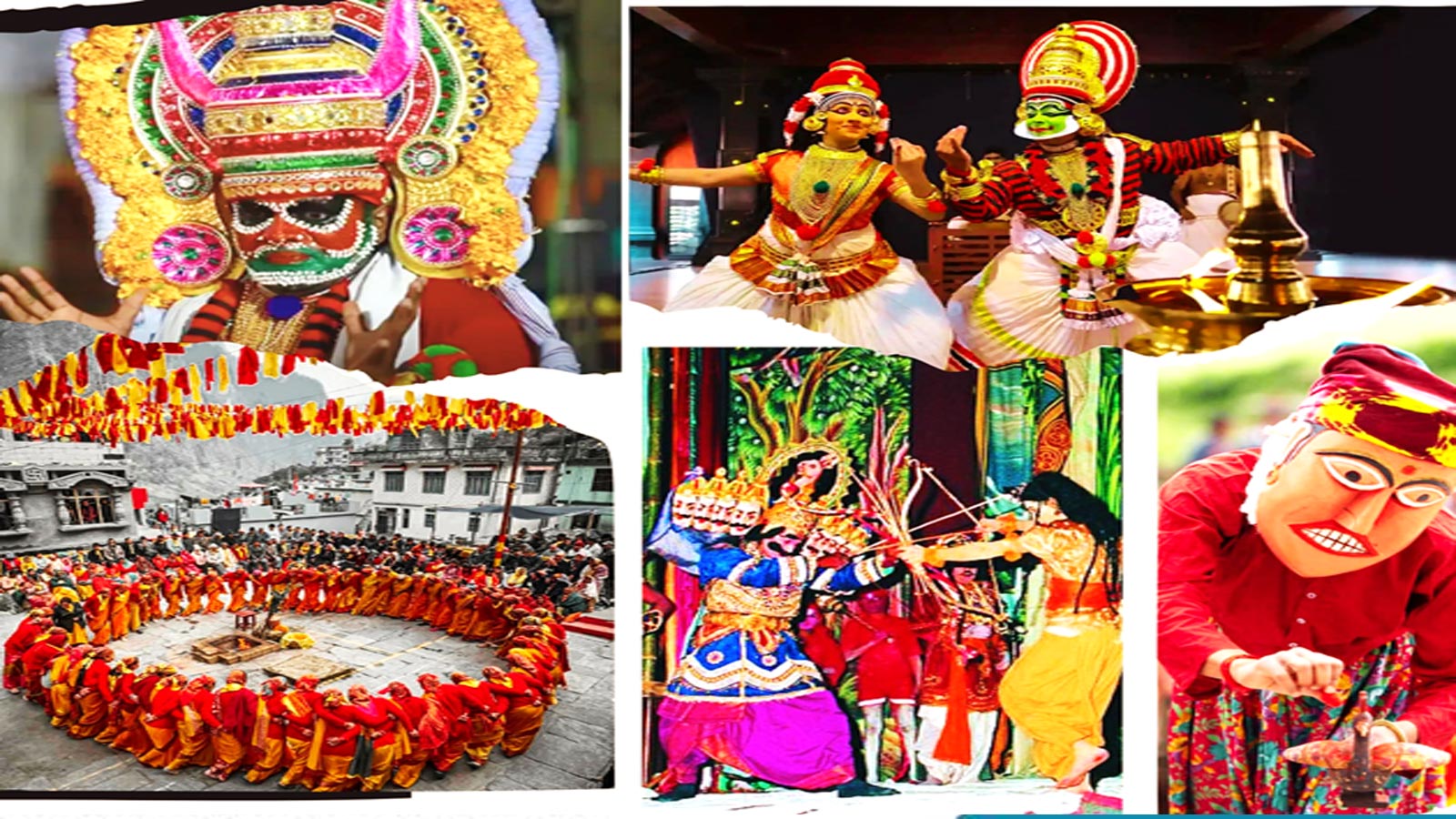In the forests of memory and the temples of time, ritual theaters in India continue to weave myth, music, and movement into the lives of communities. These sacred art forms are not mere performances but living bridges between the divine and the everyday, spaces where gods are invoked through human gesture, where stories transcend generations, and where art serves both devotion and identity. Recognized by UNESCO, forms such as Kutiyattam, Mudiyettu, Ramman, and Ramlila stand as luminous testaments to India’s intangible cultural heritage, reminding us that culture survives not in relics but in continuity.
Long before theaters built of cement or stages lit by electric lights, ritual theater in India found its home in temple halls, village courtyards, and sacred precincts. Kutiyattam, for instance, practiced in Kerala, is believed to be over 2,000 years old, synthesizing Sanskrit classical drama with local traditions. It uses subtle neta-abhinaya (eye expressions) and hasta-abhinaya (hand gestures) to unfold layers of emotion. A single episode may unfold over several days, with performers spending years mastering their craft. Mudiyettu, performed after harvests in Bhagavathi temples of Kerala, dramatizes the mythic battle of goddess Kali against demon Darika, integrating ritual purification, dance, and community participation into a holistic sacred practice.
In the northern hills of Uttarakhand, Ramman is a vivid example of ritual theater woven into the fabric of village life. Celebrated every April in the twin villages of Saloor and Dungra, Ramman honors the local deity Bhumiyal Devta through masked dance, narrative recitation, and community engagement. Each caste and household plays a role, including mask-makers, percussion musicians, narrators, and dancers, while masked characters draw from local legends and epic tradition. The theater here is not an art for the elite but a communal voice, a living mirror of local identity. Across India, Ramlila continues as another thread in this tapestry, transforming the epic narrative of Rama into seasonal performances in towns and villages, sustaining moral memory and cultural cohesion.
What binds these diverse ritual theaters is shared pillars: divine storytelling, sacred space, community participation, transmission, and artistic fusion. They bring narrative myth into everyday life; locate performance in sacred architecture (temples, courtyards, and kuttampalams); draw local communities to fund, stage, and participate; transmit traditions across master-disciple lineages; and fuse music, dance, drama, masks, storytelling, costume, and ritual into a single living canvas. Over time, these forms have adapted, opening up to larger audiences, expanding patronage, and surviving in new contexts. Their survival depends on local ownership, ritual anchoring, and shared responsibility.
Yet, these traditions face challenges. Modernization, migration, changing lifestyles, and economic pressures strain the communities that sustain them. The number of full-time practitioners shrinks, apprenticeship models become harder to sustain, and performance venues degrade. Recognizing their value, institutions such as the Sangeet Natak Akademi (under the Ministry of Culture) support documentation, archiving, training workshops, awards, and festival platforms to keep these forms alive. By linking tradition to contemporary appreciation, they help preserve this living heritage in dynamic interaction with modern society.
The value of ritual theater in India is not just artistic; it is social, spiritual, and ethical. In small villages or great temple halls, these performances reaffirm collective memory, anchor social identity, and nurture values of heroism, compassion, and cosmic balance. They offer a living curriculum of mythology, morality, and aesthetics, nurturing each generation’s connection to land and legend. And in an era of homogenization, they stand as resilient forms of diversity, reminding us that each community carries its own mythic pulse.
As India moves toward its vision of a culturally confident future, safeguarding ritual theaters is imperative. These art forms deserve not just preservation as museum pieces but revitalization through community engagement, youth training, adaptive presentation, and institutional support. When the lamp on the temple stage burns, when masks breathe, when voices chant, and when dance pulses, these are moments where culture is not preserved but lived.
In the heart of India’s diverse landscapes, these ritual theaters remain timeless bridges between the sacred and the everyday, weaving myth, music, and movement into the very soul of communities. From the delicate gestures of Kutiyattam in Kerala’s temple halls to the vibrant communal dances of Ramman in the Garhwal Himalayas, they remind us that culture is ever alive, not static but a living pulse nurtured through shared participation, sacred spaces, and generations of apprenticeship.










